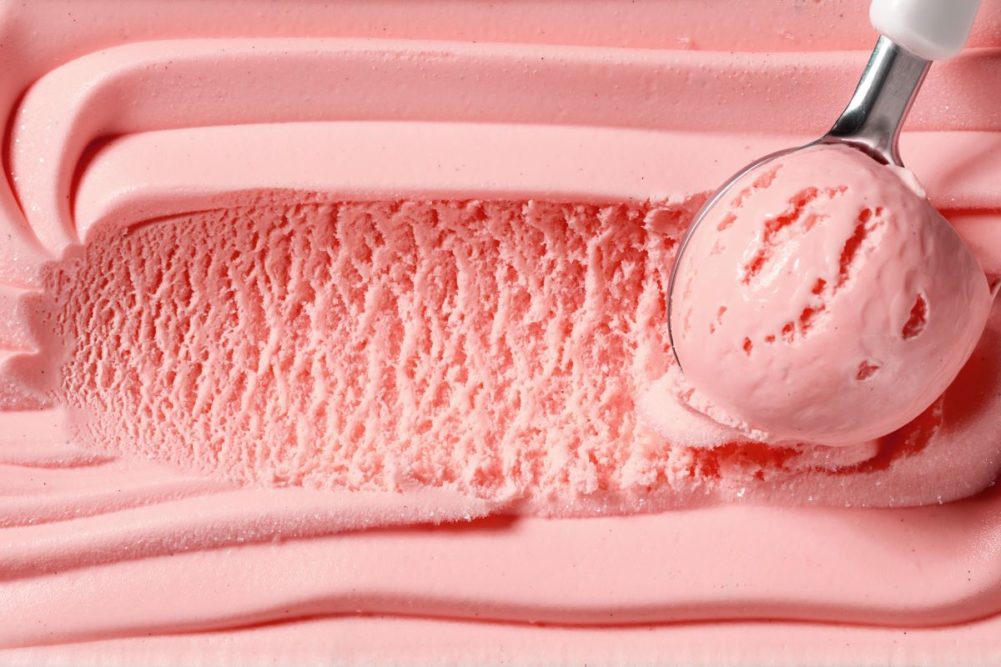Image

Texture innovation: ‘Air is the ingredient of the future’
 Photo: ©MARA ZEMGALIETE – STOCK.ADOBE.COM
Photo: ©MARA ZEMGALIETE – STOCK.ADOBE.COMBy Donna Berry, Food Business News
Texture is something one does not think about when eating, unless it’s off. It’s an attribute that is more than mouthfeel and incorporates how food dissolves in the mouth and how it’s tasted. It’s the third dimension and is mostly about nothing. But nothing is something.
Ice cream manufacturers have long understood the role air plays in texture development. They refer to the amount of air incorporated into mix prior to freezing as overrun. The less overrun, the more dense the ice cream; and often the more expensive. After all, air is free.
“Texture is the next thing,” said Morgaine Gaye, a global food futurologist based in the UK. “It’s not just the surface anymore.”
Consumers often think they taste texture but in reality texture is a flavorless attribute. It is, however, the backbone of food product development because it has an impact on the other attributes.
“We believe texture plays an underappreciated but critical role in how consumers like or don’t like the food they eat,” said James P. Zallie, president and chief executive officer, Ingredion Inc., Westchester, Ill., during a Feb. 21 presentation at the Consumer Analyst Group of New York conference.
So why texture now? As a food futurologist, Gaye is in tune with general pop culture, everything from fashion to geopolitics.
“And right now, with everything going on in the world, consumers do not want to be tied down,” she said. “People are off-loading. They want less. They crave a feeling of lightness, and that’s what you get with air.”
Think lattice cookies, marshmallows and cream cheese. With the latter, note how the texture varies between a block and whipped tub. Crevices and pockets create unique textures and thus, eating experiences. Manufacturing processes may assist with incorporating air and water.
Ingredients also play a role. Think how gluten entraps air in a leavened baked food and how gelatin turns water into a slick, melt-in-your-mouth encounter.
Gaye believes 3D-printing will play an important role in developing new textures in foods.
“Air creates interest,” she said. “Air is the ingredient of the future.”
Texture is something ingredient companies have been trying to emphasize as a way of creating a point of differentiation in the marketplace. Texturants are a category of ingredients that assist with incorporating air or binding water in a food matrix.
Usually carbohydrate or protein based, texturants vary in function and by application. For example, maltodextrins and polydextrose add body and build total solids, while starches add viscosity and body. Gums tend to build viscosity and prevent phase separation, while emulsifiers bind fat and aqueous phases.
Zallie said the market for texturizing ingredients is “a large addressable market that is growing steadily.”
He said the Ingredion’s market insights group found superior texture for taste is foundational for consumer preference. In fact, 70% of consumers agreed texture gave foods and beverages a more interesting eating experience, according to consumer research conducted by the company.
“Think for a moment about boba tea, which has gained popularity and contains tapioca pearls, which is basically tapioca starch and some hydrocolloids to keep the product to have its integrity in a beverage,” Zallie said. “And 84% of consumers associated a lighter texture with healthier options. Think rice cakes or rice crisps, for example.”
Product developers should address texture needs first in order to make sure the ingredients used in the formulation stand up to the manufacturing process and storage requirement conditions. Once that is confirmed, then flavor, color and the other attributes may be addressed.